Eight Workshops Conducted During WTEA International Theatre Festival 2023
From October 23 to 28, eight workshops took place as part of the WTEA International Theatre Festival 2023. Students and educators from different countries actively participated, gaining a deeper understanding of different theatrical methods through practical experiences.
I. Workshop by Prof. Giorgos Zamboulakis
On the morning of October 22, Giorgos Zamboulakis, Professor of Acting from the Athens Conservatoire Drama School, Greece, conducted a workshop in Room 211 of the Acting & Directing Studios Building. The workshop‘s theme was Exercises on Voice, Physicality, and Energy, and Chorality in Ancient Greek Drama.

The first part of the workshop focused on voice and physicality exercises. The students were paired up, with one continuously chanting an “ah” sound while the other, with a clenched fist, tapped the neck and back, before proceeding to massage the entire body to relax the vocal cords and muscles. Subsequently, the participants formed a circle, continuing their vocalizations while engaging in actions such as shaking their bodies and swinging their arms to further warm up.

Next, as part of the physicality training, Prof. Zamboulakis demonstrated a tacit understanding exercise from the Drama School of the Athens Conservatoire. Firstly, 18 students freely walked in a figure-8 trajectory within the limited classroom space, attentively observing their peers to achieve a unified rhythm. The professor increased the difficulty by varying the rhythm and adding movement requirements. At times he randomly designated a student to initiate a movement for others to mimic, which required the students‘ intense attention. Under the professor’s guidance, the students gradually and spontaneously achieved uniformity in their collective movements through careful observation and imitation.
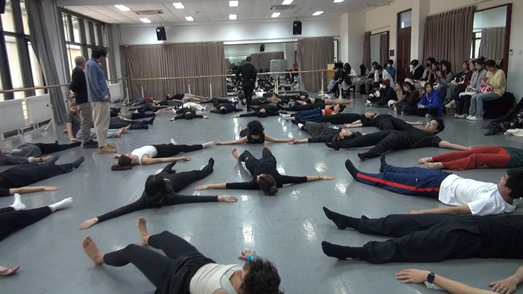
In the energy training session, the professor asked the students to imagined that all energy was focused on a specific part of the body and all movements should be initiated by this point. Based on the figure-8 walking, they used arm movements to lead themselves forward, constantly changing the location and intensity of their energy release. Then came the ‘Prometheus Bound’ exercise, in which the participants were asked to imagine that their ankles and wrists were chained and they had to exhaust their strength to break free. In this way, the students got to hone their control over their inner energy.
Following this, the students performed an excerpt from Antigone to showcase the role of chorality in ancient Greek drama. They varied their pitches in time, sometimes harmonizing beautifully, at other times speaking individually to create a chaotic scene, aiding in the progression of the plot.
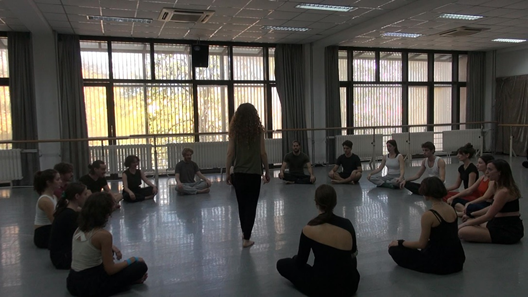
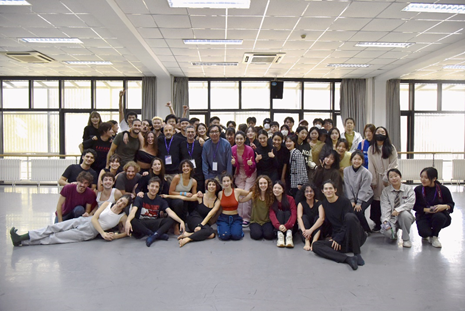
The workshop was held again on the afternoon of October 28 at the Jingjiang Palace in Guilin, offering unique training methods to local professional groups and individuals.

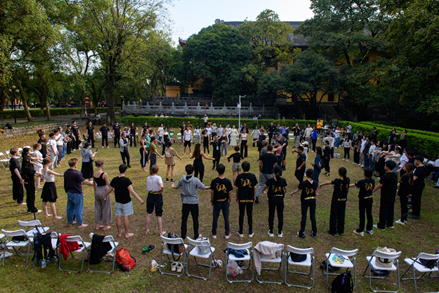
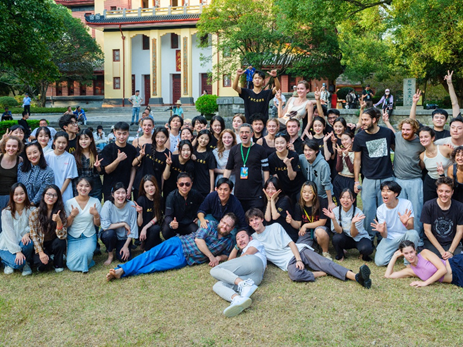
II. Workshop by Prof. Jurgen Beyer
On the afternoon of October 23, Prof. Thomas Jurgen Beyer from Ernst Busch University of Dramatic Arts, Germany, conducted a musical workshop at Small Theatre 2 of the Theatre Centre, the Central Academy of Drama. The workshop, titled There Is More Than Just One Way, was based on segments from Bertolt Brecht and Kurt Weill's play The Three-Penny Opera, exploring different approaches to working on songs for actors. Prof. Beyer emphasized that the music composition methods introduced were fundamental and tailored for actors instead of professional singers, aiming to guide the participants toward the right path in vocal training.
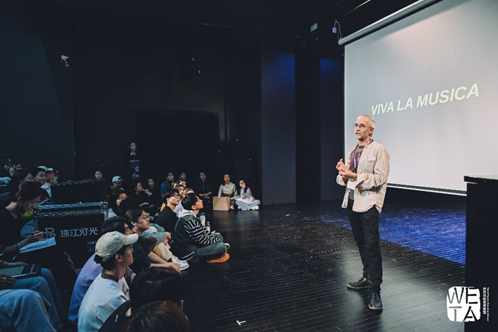

During the warm-up, Prof. Beyer used the 400-year-old classic song Viva la Musica to start the session, inviting all attendees to join the choir. He guided the participants to sing while imagining ‘three stages of revolution’, encouraging them to envision three different scenarios and control the volume and emotion of their singing accordingly.

He summarized that melody, rhythm, and structure were three crucial elements in music. Creators should vividly imagine the different meanings of the same text in various contexts to convey the song effectively. He outlined three methods of creating based on the order of learning the melody and lyrics, and recommend a fourth approach: “First, read the text and understand the lyrics; then, analyze what the lyricist intends to convey; finally, try to resonate with the composer based on personal ability and conditions.” He reiterated the workshop’s theme: “There is more than just one way of creation.”

In the second chapter, Prof. Beyer used two famous songs from The Three-Penny Opera to deepen the participants’ understanding of creative methods. During the analysis of Mack the Knife, he first led the participants to understand the lyrics’ gist, analysing different characters’ attitudes toward Maceath, their relationships, the function of each character’s lyrics, and the overall musical structure and rhythm. He then invited five participants for a joint performance, accompanying them on the piano and instructed them on their performance. He expressed that actors must find a balance between the text and the music, not overly focusing on the text at the expense of musicality. Composers sometimes lean more toward music, but different performances have different metrics. It is essential to for creators to understand that pleasing everyone would be impossible, hence the need to explore a ‘balance point’.
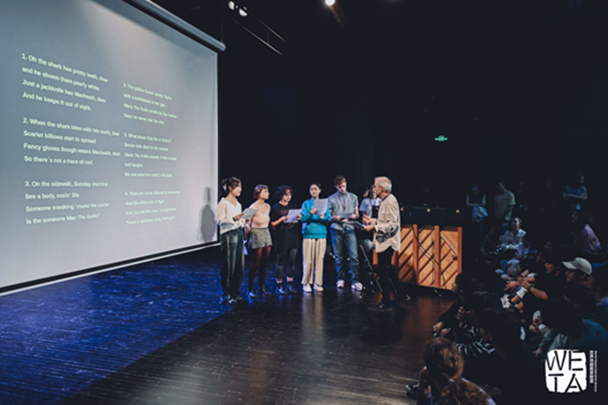
The second song was Pirate Jenny. Prof. Beyer first guided the participants through the text reading and analysis, inviting the actress portraying Polly to perform on stage. The workshop concluded amidst the participants' applause and cheers.
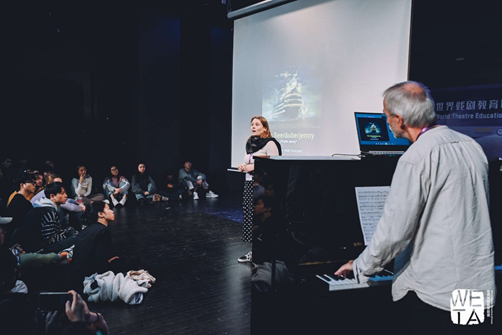
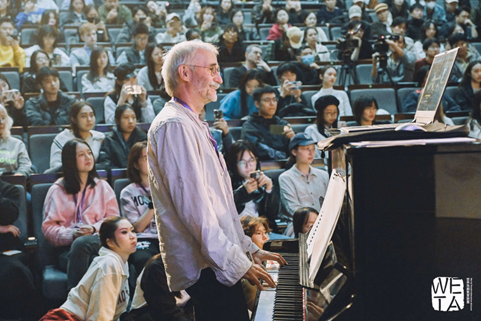
III. Workshop by Mr. Alexander Khukhlin
On October 24, Mr. Alexander Khukhlin, a director with Russian Institute of Theatre Arts, Russia, conducted a workshop themed as Improvisation at the Small Theatre 1 of the Changping Campus, CAD. This workshop went beyond non-verbal communication in the area of actor’s improvisation. It encouraged actors to express and articulate their deepest, hidden emotions through improvisation, thereby deepening their self-awareness. To achieve this objective, the number of participants was limited to 25.
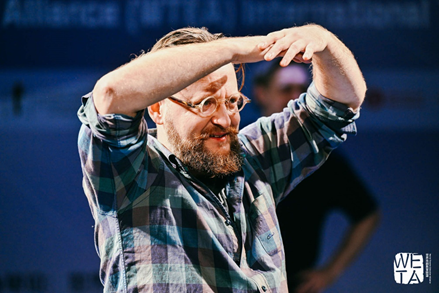
The first part of the workshop involved a word-passing game. Three simple words were arranged in a specific sequence, and actors had to take turns articulating them in order. Participant with any mistakes, sequence reversals, or failure to keep pace would be eliminated. The rapid pace of word transmission quickly established a rapport among the actors. Mr. Khukhlin then required that actors infuse specific emotional tones into their word-passing, such as ‘amorous’, ‘confessional’, ‘sceptical’, and ‘madly passionate’.
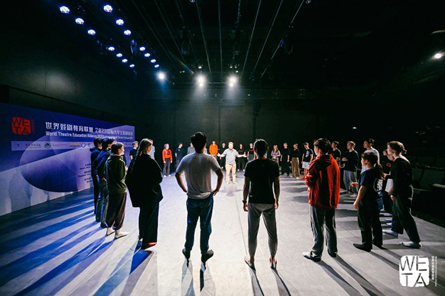
In the second part, Mr. Khukhlin set the dramatic scenario as ‘The Last Kiss’. He asked two participants to use minimal verbal concepts and fully harness their inner body energy to spontaneously create and act out the dramatic situation.
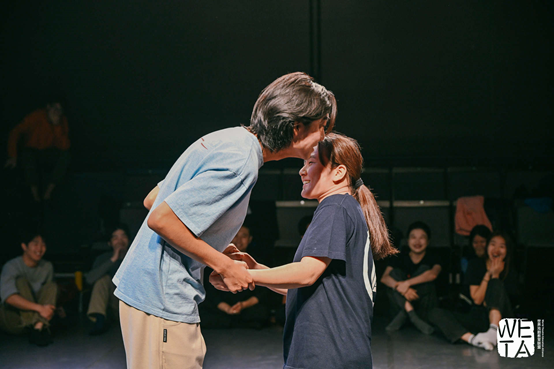
The third part, under Mr. Khukhlin’s guidance, involved careful observation of one’s physical movements, with others imitating these movements to ‘become’ the person. Mr. Khukhlin reminded the actors not to just mimic the movements superficially or exaggerate them but to focus on experiencing the life energy in the movements, as even simple gestures could contain rich dramatic potential.

In the fourth part, using an apple as a prop, the actors collaborated to improvise scenarios and plots. These plots had to be about the actors' hidden inner emotions and unique personal experiences.

Finally, Mr. Khukhlin defined the theatrical theme as ‘Newborn’. Each actor was asked to select a typical action that best fit the theme and then froze it into a tableau according to the improvised plot and their unique insights.
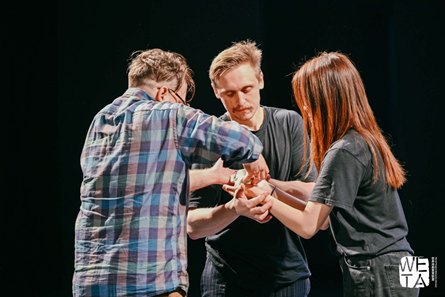
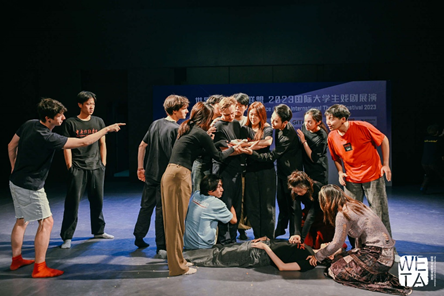
IV. Workshop by Dr. Tamta Tavdishvili
On the morning of October 25, a workshop took place at the Small Theatre 2 of the Changping Campus by Shota Rustaveli Theatre and Film Georgia State University, Georgia. The workshop was led by Dr. Tamta Tavdishvili, a doctoral graduate of Shota Rustaveli Theatre and Film Georgia State University and one of the directors of the play AIA. She guided the participants through two theatrical exercises centered on the theme of The Body As A Word, focusing on training the body and exploring and releasing internal energy.
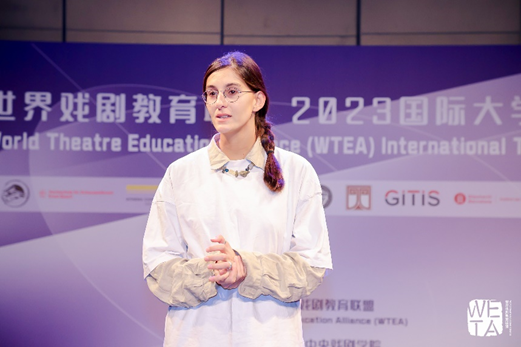
The first part involved trust exercises. Prof. Tavdishvili had the participants form a circle and pair up, with one person taking the role of ‘guide’ and the other as the ‘guided’. When the exercise commenced, the ‘guide’ applied pressure to the back of the ‘guided’ person’s neck to control direction. The ‘guided’ were instructed to close their eyes, relax their bodies, and concentrate solely on the music and the guiding force. Dr. Tavdishvili believed that such physical exercises build ‘trust’, which is essential in theatrical creation and performance, enabling actors to fully trust their counterparts and truly immerse themselves in their roles.

The second exercise focused on ‘finding and releasing self-energy’. Participants freely moved around the space, following the music to release their bodies. Prof. Tavdishvili emphasized that such release should start from the feet, that they should feel the energy emanating from the earth, thus mobilize the entire body from bottom to top, and shoud focus on the sensation of their own energy. After the exercise, she asked the participants to slowly lie flat on the ground to feel the fullness of energy and inner peace, before embrace themselves or other participants.
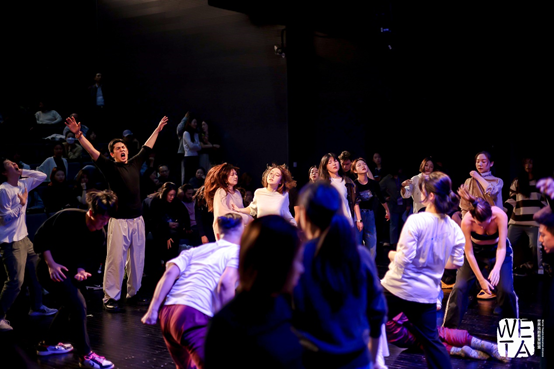
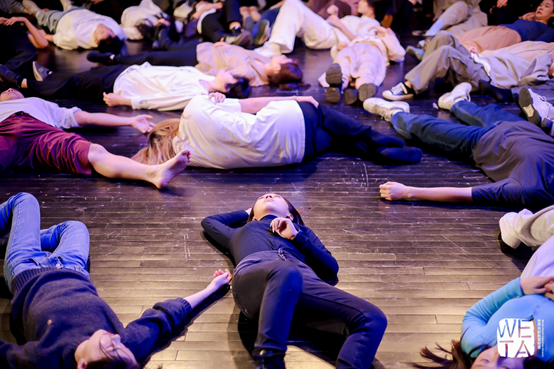
Finally, Dr. Tavdishvili took questions from the participants. Many expressed gratitude for the physical exercises, which provided an unparalleled theatrical experience and insights into personal energy. This allowed the participants to step back from their everyday lives and reassess the power of physical theatre.
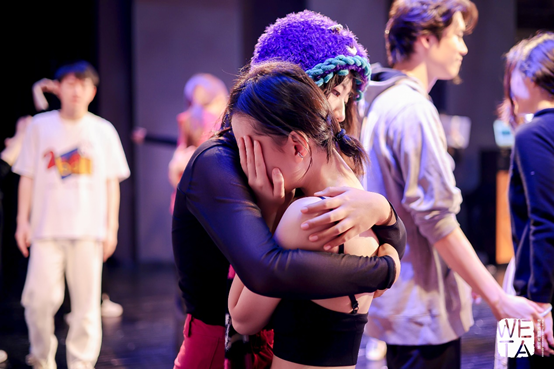
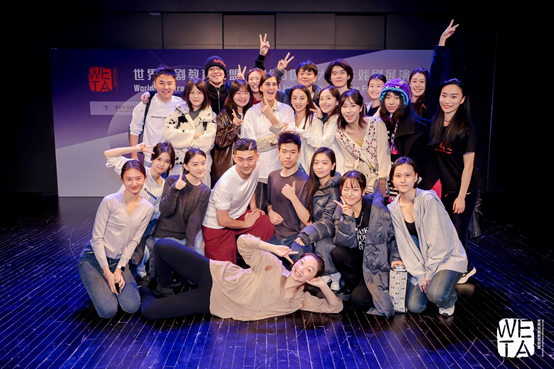
V. Workshop by Ms. Tachibana Kayo
On October 24, Ms. Tachibana Kayo from Toho Gakuen College of Drama and Music, Japan conducted a workshop themed as Stage Performance at the Small Theatre 2 of the Changping Campus. The speaker has been learning Taiko drumming since childhood, and masters its performing skills. She is the costume designer for the Toho's version of King Lear for the WTEA International Theatre Festival 2023. Together with students from the college, she led the participants in experiencing the physical training typically conducted before rehearsals and the basic techniques of the Taiko drum.
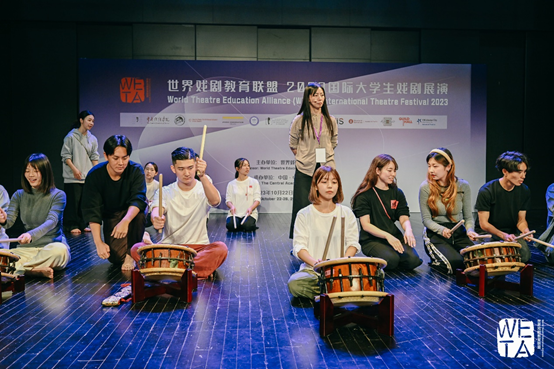
The workshop commenced with physical training. This method does not rely on language but on the actors’ bodies and creativity for stage performance. The participants stood facing each other, imagined holding a ball and tossed it to their partner. The one throwing the ball had to conceive its characteristics, while the receiver had to respond with their body and facial expressions, mirroring those characteristics. This act of throwing and catching the ball symbolized the dialogue on stage, where the process of passing the ball represented the continuous physical consensus and emotional communication between two persons.

The next step involved training in bodily perception. The participants walked randomly, feeling the width and height of the space with their bodies. As the music played, their gazes intermingled, and they used bodily perception to find their training partners, and determine the leader of the duo. The led participants closed their eyes, moving in the space to the rhythm of the music under the leader’s guidance. Throughout this exercise, both parties relied solely on physical contact and breathing to sense each other’s strength.
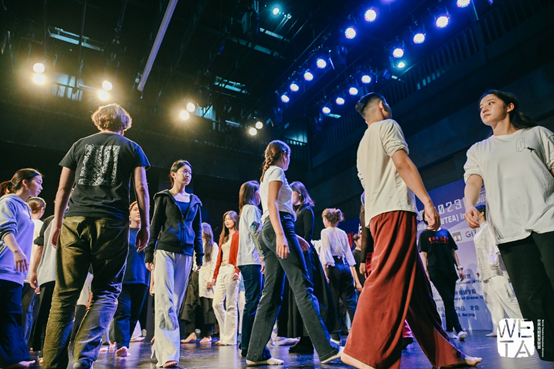
The final part was Taiko drumming practice. Ms. Tachibana first allowed the students to go on stage to touch and familiarize themselves with the Taiko drum. Then, students from Toho Gakuen College led the participants in practicing the drumming techniques, listening to the different sounds produced by the edge and the face of the drum. They practiced several basic rhythm patterns to enhance the musicality of the drum sounds. This session culminated in a warm and friendly interaction between the participants and the Japanese students.

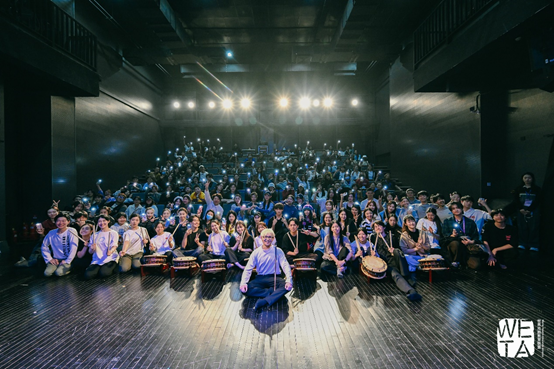
VI. Workshop by Prof. Baek Nam-Young
On the morning of October 25, Prof. Baek Nam-Young from the Department of Theatre, Chung-Ang University, Republic of Korea, conducted a workshop titled Carpet Play at the Thrust Stage Theatre at the CAD.
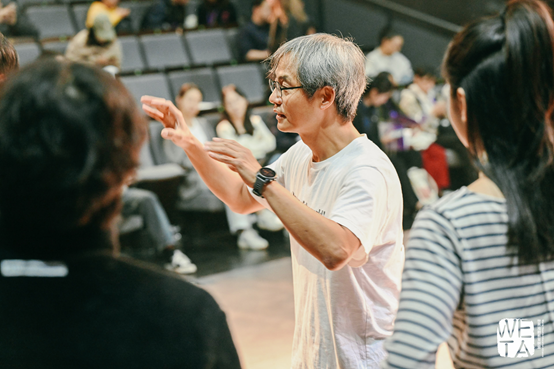
The concept of ‘carpet play’, derived from the artistic practices of British theatre master Peter Brook in Africa, was further elaborated by Prof. Baek Nam-Young, who integrated his experiences of learning mask drama in Germany. Carpet play is a dramatic form where actors become the primary medium of expression on stage. In a carpet play, the actors use their bodies and voices to represent objects' shapes, personification, the passing of time, and sound effects for emotional elevation.

In the workshop, Prof. Baek, along with the actors, illustrated one of the most crucial elements of carpet play through a playful approach: training actors in various body movements. First, the actors demonstrated a scene from the play Once Upon A Time, introducing the story’s background through song and dance, showcasing how carpet play incorporates background narration into the performance. Next, they portrayed scenes of shooting tigers and retreating, using personification techniques. Thirdly, they demonstrated how to express sound through body language in carpet play without dubbing. Then, the director explained the second feature of carpet play—one actor playing multiple roles—by combining the same actor’s portrayal of different characters. Finally, the actors depicted a scene of traversing forests and caves, illustrating the third feature of carpet play: time and space represented flexibly through actors’ bodies.
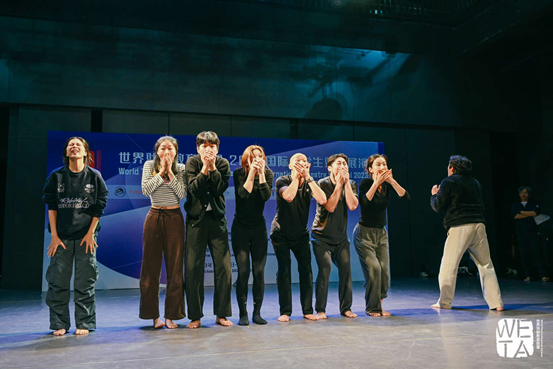
During the interactive game session, Prof. Baek invited the audience on stage. Divided into three groups of ten, they joined the actors in rehearsing sounds like echoes, wind, and water droplets in a cave, as well as monster noises. The actors first taught the participants basic movements and vocalizations, then asked them to improvise based on the previous person's performance.
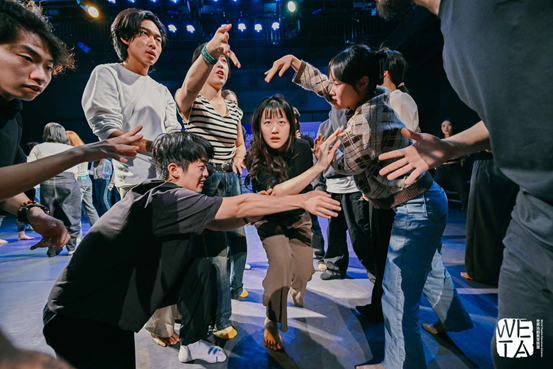
In the final Q&A session, when asked about whether the play had unique Korean performance techniques, Prof. Baek earnestly replied that the uniqueness lay in finding an easier connection with the audience.
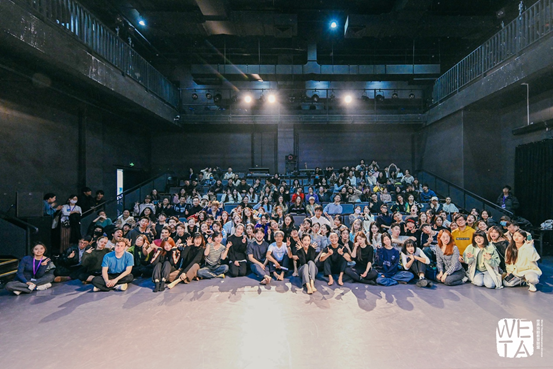
VII. Workshop by Prof. Lance Marsh
On the morning of October 25, Prof. Lance Marsh from Oklahoma City University, the U.S. conducted a workshop titled Wall-To-Wall Shakespeare: Choice-Making Through an Exploration of the Humors at the Small Theatre 2 of the Changping Campus.
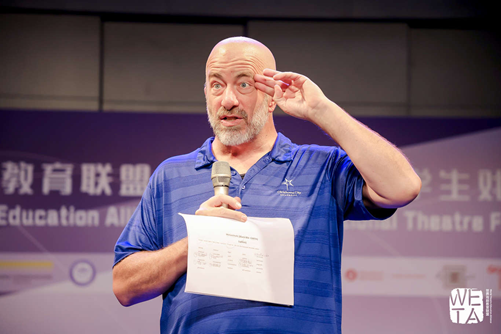
The workshop began with an exercise called ‘The Four Walls’, representing total emotional control, no emotional control, introvert, and extrovert. The professor first invited volunteers to come on stage and stand in a line. Each student was asked to prepare their lines and transition from introvert to extrovert, with their line delivery shifting from restrained to expressive. Then they moved from extrovert back to introvert, with the professor emphasizing the importance of this transition. Students noted that in the extrovert part, their emotions were released, while in the introvert part, they experienced introspection.
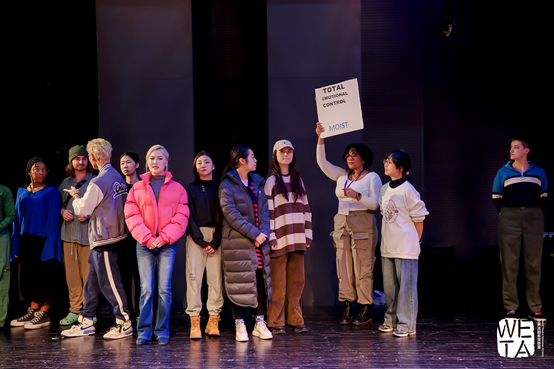
Next, students walked back and forth between high emotional control and no emotional control, feeling the state of delivering their lines in these different modes.
Subsequently, the professor introduced the concept of the four humors. In Shakespearean England, it was generally accepted that the body was composed of four humors (or vital fluids). Shakespeare uses humoristic nomenclature to describe the traits of characters in his plays. The four key humors and their corresponding temperaments are sanguine, phlegmatic, choleric, and melancholy.

The professor provided relevant statements for each humor, allowing students to feel the emotions of these statements and then incorporate that emotion into their speech delivery. After repeated practices, the professor noted that sanguine was optimistic and cheerful, somewhere between extrovert and high emotional control; phlegmatic was cold and slow, between introvert and high emotional control; choleric was irritable and angry, between extrovert and no emotional control; and melancholic was sad and sorrowful, between introvert and no emotional control.
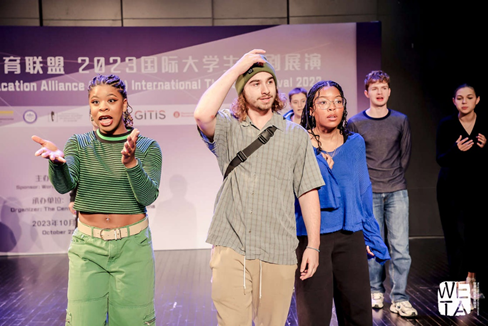
Following these activities, a student shared that she felt her emotions were released during the exercises, partly due to being influenced by those around her. She inquired whether it was appropriate to be influenced in this way during the exercise. The professor replied that such influence was natural and was pleased it occurred. Drama, he explained, was about influencing others—that's the power of theatre.
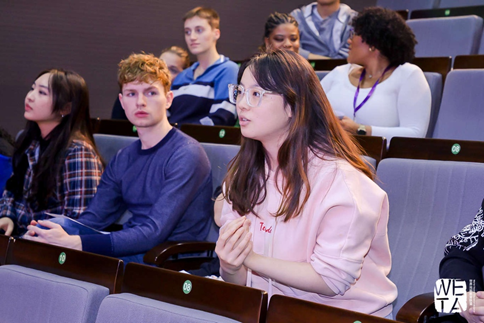
VII. Workshop by Mr. Zhao Miao
On October 29, Mr. Zhao Miao, a teacher from the Directing Department of the Central Academy of Drama, presented a workshop titled How Body and Mask in Traditional Chinese Performing Arts Are Used in Contemporary Theatre at the Jingjiang Palacce in Guilin, with Cao Lu, Shi Yan, and Du Shuaiqiang as guest speakers and demonstrators. The workshop started from the perspective of traditional Chinese way of acting, and then touched upon the basic characteristics of Chinese theatrical performances through the display of ancient Nuo opera masks and traditional body movements on stage, taking the masks from Mother Courage and Her Children, a physical play produced by Theatre SanTuoQi founded by Mr. Zhao Miao, as an example to demonstrate the use of Chinese masks.

In the workshop, Zhao Miao first showcased the masks from Aquatic, another play by Theatre SanTuoQi, introducing the cultural and geographical background of Nuo opera. He explained the reason why Nuo opera masks mostly worn on the forehead or the top of the head instead of the face. One reason is that Nuo opera originated in mountainous areas, where the audience sat on slopes overlooking the performers. Therefore, wearing masks on the forehead or the top of the head makes it easier for the audience to identify the actors.
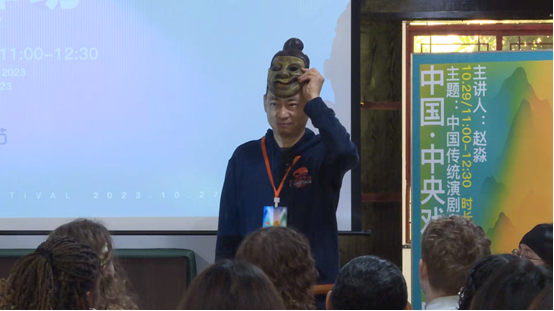
Following this, actor Du Shuaiqiang from Theatre SanTuoQi, a graduate of National Academy of Chinese Theatre Arts, demonstrated the application of theatrical movements in physical drama to the audience. Set designer Cao Lu shared key points about the materials used in making masks for works such as Mother Courage and Her Children and shared anecdotes of the production process.


Actress Shi Yan then took the stage and started with the masks from Mother Courage and Her Children in four different colours, with each carrying different meanings. She demonstrated how actors should express emotions such as joy, anger, sorrow, and fear with a mask on their face. She also invited some members of the audience to come onstage and experience it firsthand.


The workshop showed how the aesthetics of traditional Chinese way of acting are applied in contemporary theatre.
Photos: Department of Publicity of the CAD, Guilin Festival 2023
Articles: Department of Publicity of the CAD, WTEA Secretariat
